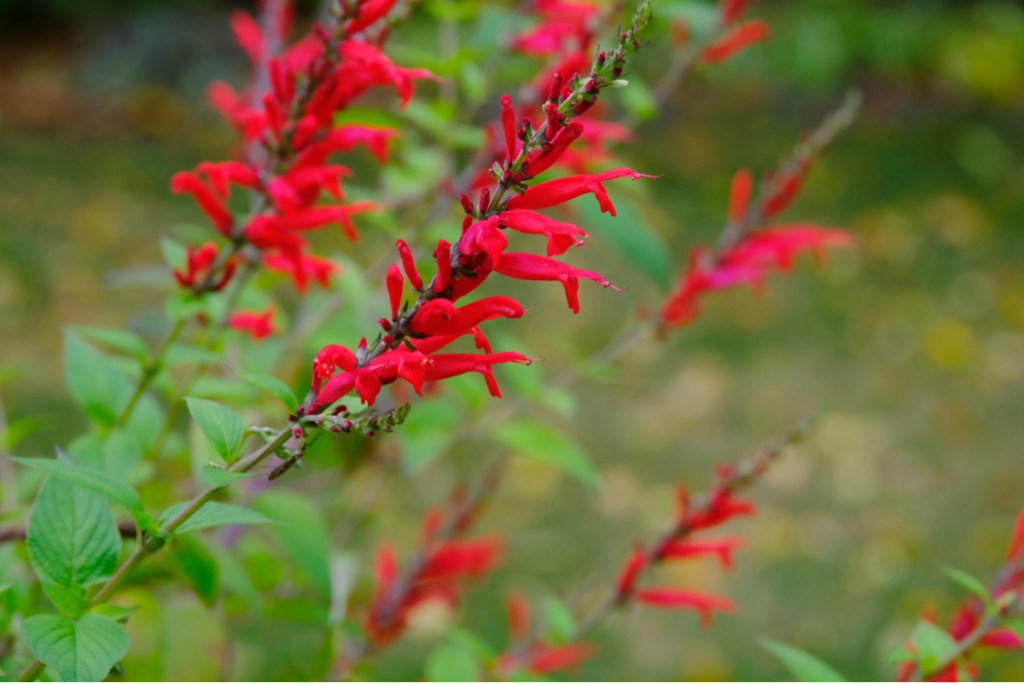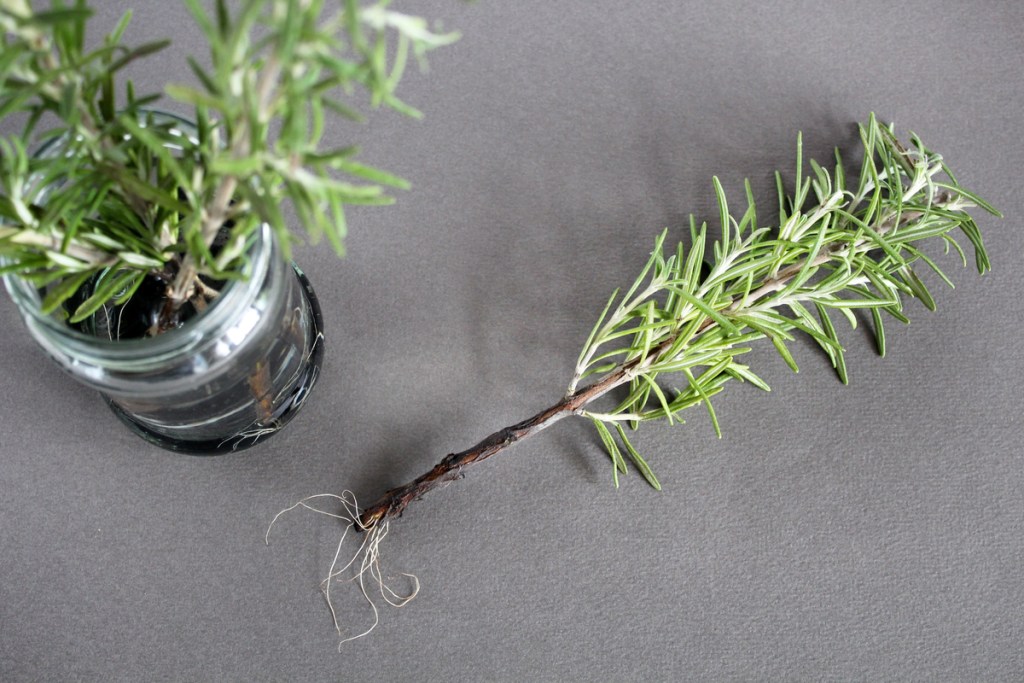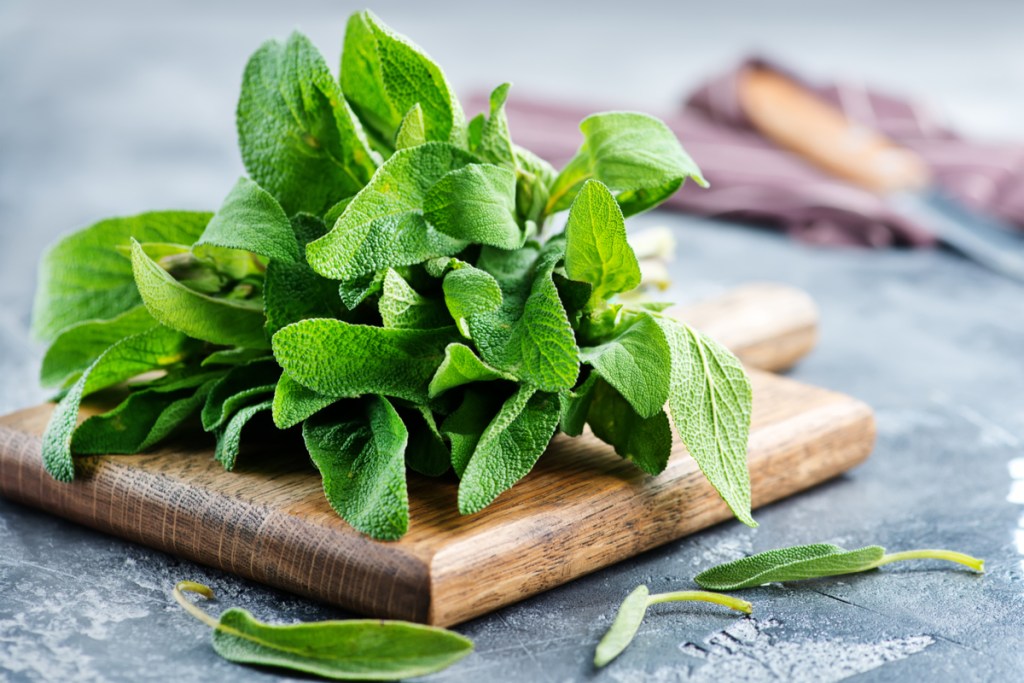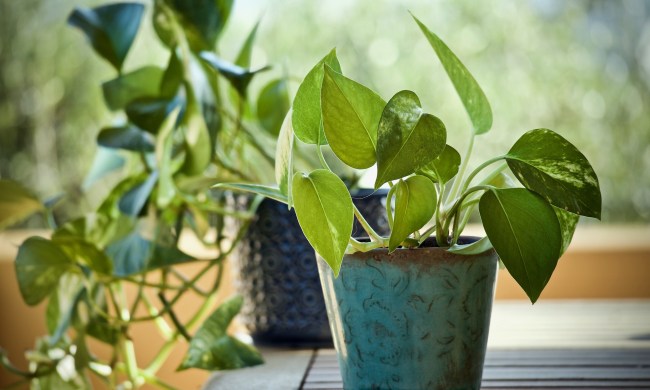Salvia, or sage, is a wonderful, fragrant herb. You can plant it in flower, pollinator, or herb gardens, and it’s tolerant of many conditions. Sage is an easy plant to grow and care for, even for beginners. It’s a drought-tolerant herb, and it looks lovely in sunny or shady gardens.
This small shrub blooms in a range of colors, and several kinds of sage are even edible. If you’d like to try adding this beautiful plant to your yearly garden, then you’re in luck! Here’s everything you need to know about planting salvia successfully.
Types of salvia
Although we think of sage as a useful and flavorful herb, only some types are edible. If you plan to grow salvia for ornamental purposes, then there are many salvia species to choose from. Scarlet sage, or Salvia splendens, has brilliant red flowers, and there are even Salvia splendens varieties that bloom in other colors. Most gardeners grow this sage species as an ornamental. Salvia coccinea, also sometimes called scarlet sage, is another ornamental sage. If you want something a little larger, then consider Mexican bush sage, or Salvia leucantha.
If you like to cook with your sage, then common sage, Salvia officianalis, is a good choice. This is the sage species most commonly used in cooking. Pineapple sage, Salvia elegans, has a similar appearance to Salvia splendens and Salvia coccinea. However, pineapple sage has a distinctive pineapple scent to the leaves, which makes it particularly good for cooking. Additionally, rosemary is also a salvia. Although not typically referred to as sage, rosemary has been classified as a salvia since 2019. Previously called rosemarinus officianlis, it’s now labeled as salvia rosmarinus.

Planting salvia
Salvia can grow from seeds, cuttings, or nursery starts, and it’s easy to plant them at any stage. Begin by choosing a good location. Salvia plants thrive in full sun, but they can tolerate some shade. However, planting salvia in the shade can reduce the number of flowers you see. You can begin planting salvia a week or two after the last winter frost has passed.
Plant your salvia in well-draining soil. Most varieties don’t enjoy standing water or slow-draining soil. Loosen the soil before planting, especially if you’re working with a nursery start or mature plant. The larger the variety, the deeper you should loosen the soil. If you’re planting in nutrient-poor soil, adding compost can help.
If you’re working with a nursery start or mature plant, the hole should be twice as big as the plant roots or the container it came in. Set the plant in the center of the hole and fill in the soil around it. You can root cuttings in water first or plant them directly in the soil.
Salvia seeds can start indoors 10 weeks before the last frost or you can plant them directly in the garden after the last frost. The seeds only need a thin layer of soil over them. Keep the soil moist while they grow. Space salvia plants 1 to 3 feet apart, depending on the mature size of the variety.

Salvia care
Salvia care is simple once they’re established. The plants don’t typically need feeding, although perennial varieties planted in poor soil may benefit from an application of compost. They also don’t need frequent watering. Most salvia varieties only need to be watered during droughts. Adding a layer of mulch around the base of the plant helps the soil retain water and keep weeds at bay.
Some salvia varieties don’t need pruning, but larger, shrub-like varieties can benefit from it. Pruning keeps their height in check and prevents stems from becoming leggy. Regular deadheading, or the removal of dead blooms, encourages your salvia to keep blooming. However, at the end of the season, you can leave flowers on the plant to produce seeds.
Luckily, salvia rarely has issues with pests. It attracts butterflies and hummingbirds, but the strong smell of its leaves tends to ward off most pests. It is even deer resistant! It can, however, develop fungal infections if overwatered.

Harvesting and using salvia
You can harvest salvia in leaves or stems, depending on how you plan to use it. Harvesting the leaves is best for culinary uses, as you can simply pluck the number of leaves you need for each dish.
If you plan to harvest salvia for drying, burning, or displaying, then it’s easier to harvest it by stem. Use a sharp, clean pair of scissors or garden clippers and cut a few inches off the ends of a few stems. Keep the amount you’re harvesting proportional to the size of the plant.
Salvia makes a lovely addition to most gardens. As long as you have plenty of sunshine and warm weather, you can grow salvia without much issue. It grows as an annual or perennial. Salvia’s stunning flowers are a favorite of butterflies and hummingbirds, and many songbirds enjoy its seeds. On top of all that, salvia’s leaves smell wonderful, and some varieties are tasty as well. Whether you prefer to see it, smell it, or taste it, enjoy your new garden addition!



